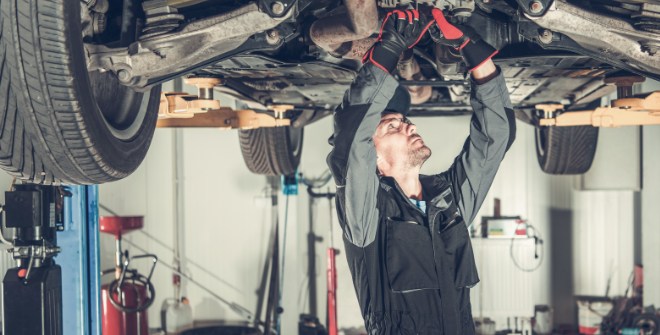
Lakeside Living fall edition 2020
I’m not really sure where summer went, but it feels like it wasn’t a typical one. With many restrictions in place, some of the normal summertime things may not have been on your schedule this year. However, our guests have mentioned they’ve done lots of travelling by car, which is reflected by the record number of vehicles we’ve seen throughout the year and the number is still growing!
Lately, we’ve also been seeing drivers make the decision to keep their vehicles longer, and in some cases, several years longer. In fact, the industry is reporting that the average age of the car on the road today is about 12 years old. A few things may be a factor in vehicle retention. There could be some uncertainty about the economy due to the pandemic and reluctance of financing a new car. Durability has vastly improved over the last decade, meaning cars last for longer with more miles driven. When I was a little younger – ok, a lot younger, vehicles were lucky to make it 10 years and 100,000 miles. Today, that represents a vehicle that may not even be halfway through its life cycle!
Additionally, vehicle owners are more mindful of the importance of performing proper vehicle maintenance at regular scheduled intervals. As you have read from my previous articles, I always emphasize maintenance, giving specific examples and recommendations. He’s another vital maintenance item: the engine timing belt. This may be one of the most important investments you can make. Here’s why:
Timing is everything. If the timing belt fails, the engine will cease, often without notice, and the car will just roll to a stop. Sometimes the motorist will only have the inconvenience of being stranded on the side of the road until the car is towed to a repair facility to have the timing belt replaced. On the other hand, the engine may suffer severe, if not catastrophic damage to its internal components. This potential disaster can be avoided easily and relatively inexpensively (compared to major engine repairs) by replacing the timing belt within the required replacement interval.
Here is why this can, and does, happen: Timing belts resemble an engine accessory serpentine belt in appearance, only they typically have square teeth on the inside surface. They usually are constructed of rubber reinforced with nylon. Timing belts are protected by a cover (Fig 1), so you can’t inspect it just by opening the hood. The cover and other components need to be removed for inspection and service.
The timing belt transfers the rotation of the crankshaft to the camshaft(s). The rotating camshaft activates the valves with precision timing, which provides air and fuel to the cylinders and remove post-combustion gases to the exhaust system. The valves and pistons are constantly moving up and down at very high speeds. When the pistons are down, the valves are open and when the piston is at the top of its travel, the valves are closed. Some engines don’t allow clearance between a valve at its lowest point and a piston at its highest. The timing belt, therefore, is the critical link to ensure that these components don’t collide. If a collision occurs due to a failed timing belt, damage to the valves, pistons, cylinder head and cylinder walls can result. This can be an expensive repair.
Many domestic vehicles built within the last several years and the majority of imports are equipped with a timing belt. Other engines rely on a steel timing chain rather than a belt which is not usually part of a maintenance schedule like timing belts. Refer to your owner’s manual or contact us if you are unsure. The owner’s manual maintenance schedule is a source of timing belt replacement intervals, typically every 60,000 to 90,000 miles.
Timing belt replacement usually requires the removal of several engine components to gain access to the timing belt. Sometimes the water pump is driven by the timing belt, so it’s recommended the water pump be replaced during the same operation. Consider replacing other accessory belts when having a new timing belt installed.
In preparation for fall and winter driving, contact our team at Christian Brothers Automotive Mooresville at (704) 816-7777 to schedule your vehicle for any service, or for our courtesy vehicle inspection. We’re equipped with an industry-leading Nice Difference Warranty that covers drivers for 3 years or 36,000 miles and expires at whichever limit occurs last. Additionally, we’ve implemented a vehicle pick-up and drop-off program for your convenience. We’ll pick your vehicle up from your home or workplace, perform the service and bring it back when we’re done. Simply ask us about this service when scheduling your appointment.
Last but not least in recognition of Veterans Day, we’d like to extend a heartfelt “thank you” to all our current and former military members for your service. You will receive a 10% Military Discount on any service or repair, up to a $50 value. We’re always here to help you.

[1].jpg)
Sunwash-Tech-with-Customer.jpg)




